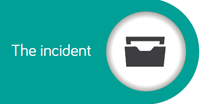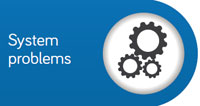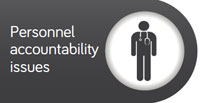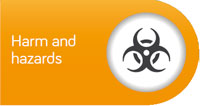High reliability in healthcare: A personal failure
In his follow-up to last edition’s article on high reliability organisations, Dr Dan Cohen revisits a personal experience that formed part of his own steep learning curve
With a steadily increasing focus on safety and risk aversion in the healthcare industry, much attention, appropriately, has focused on the stories that patients and family members have shared about their experiences. We have learned much, although in some instances, especially early on, we may have been reluctant to listen.
Sadly, in my view, we have not always equally valued the stories that clinicians may tell about their own experiences, challenges, and even their personal needs and shortcomings. As an example, I would like to ‘fillet’ myself and reveal a personal story that has affected me throughout my career. This is a story of multiple system and personal failures, fortunately embellished by transparency and honest disclosure long before these became everyday terms in our patient safety vernacular.

A, a ten-month-old girl, was admitted to an internationally prominent children’s hospital at the weekend for evaluation of a kidney mass, likely a Wilms’ Tumour, a highly curable childhood cancer.
I was the paediatric oncology fellow (senior registrar) covering the service for the weekend.
This institution’s Wilms’ Tumour protocol required the oncology fellow to administer Actinomycin-D intravenously as soon as the renal vein had been clamped at the time of surgical removal of the tumour. I wrote the orders correctly and legibly using our standard double-check process and then things became complicated…
In addition to covering the inpatient oncology service (about 25 beds in this large centre), I had additional weekend obligations for the outpatient clinic and a two-bed bone marrow transplant unit located in different, though adjacent, hospitals. Usually this multiple coverage obligation was not a problem, but on this particular weekend, two children with leukaemia were to receive outpatient L-asparaginase chemotherapy, and I had to be present in the clinic because of the substantial risk of allergic anaphylactic reactions.
I could not be in clinic and the operating theatre at the same time. Recognising this dilemma, I arranged for the anaesthesiologist on A’s case to administer the chemotherapy and briefed her thoroughly regarding the dosage, even providing a copy of the prescription. She and I had worked together for several years and I trusted her. She gladly offered to administer the medication.
Unfortunately, an emergent cardiac surgery case occurred on the same weekend and the anaesthesiologist, being ‘pump-qualified’, had to take responsibility for that case. She briefed a substitute anaesthesiologist and felt that the situation was well in hand. However, the pharmacist made a decimal point error and instead of preparing a dose of 97 micrograms of Actinomycin-D, he sent up a syringe containing 970 micrograms. The substitute anaesthesiologist did not recognise the error. This massive overdose was administered intraoperatively.
It was not until several hours later that the error was identified. While I was making evening rounds, I saw the syringe that had contained the Actinomycin-D, still attached to A’s medical record (a standard procedure at that time), and the label revealed the dosage error. I was shocked! Although not immediately toxic, the effect on this child’s bone marrow would be profound, beginning about a week after administration. I was reasonably certain that this child was going to die – and I was ultimately responsible!
I did not tell them that I thought she would die because her death was not a certainty, and voicing my concerns would have served little purpose.
I called my consultant immediately and, after calming me down, he said some things that really resonated. “Dan, we do not know that A is going to die. We can expect that she will encounter severe bone marrow suppression and gastrointestinal toxicity, but we do not know the outcome of that, and we need to be factual when we talk with the family.”
The following morning we met with A’s parents. My consultant wanted to take the lead in the conversation but I insisted that as A was my patient I wanted, and needed, to do the talking. I was the one who had originally met with the family and this was my responsibility, not his. I carefully explained to the parents that A had received a higher than desired dose of medication and that we were very concerned about this. I apologised for this error and explained that we would investigate this further in order to ascertain how it had happened.
I promised to correct any discrepancies in care identified in order to prevent this from ever happening again and then outlined the steps we would take to protect A. I promised the parents that the comprehensive resources of our institution would be mobilised to support A. I did not tell them that I thought she would die because her death was not a certainty, and voicing my concerns would have served little purpose.

Our investigation revealed the following:
- The protocol for intraoperative chemotherapy was not evidence-based, ie, it was anecdotal and experimental, and there was no informed consent for this.
- A single oncologist was responsible for coverage in multiple hospital settings, which, although usually manageable, set the stage for conflicting obligations.
- A cultural barrier forestalled calling for backup unless there was a dire emergency.
- Not all anaesthesiologists were qualified for all procedures.
- There was no pharmacy double-check process for chemotherapy orders.

- The primary anaesthesiologist did not inform the oncology fellow regarding the emergent coverage changes.
- The pharmacist erred in preparation of the Actinomycin-D.
- The substitute anaesthesiologist administered an unfamiliar drug without self-identified need for verification of dose or knowledge of side effects.
- I did not call for qualified back-up!
So – what happened to this little girl? Although she encountered profound bone marrow failure and spent three weeks in isolation with much procedural pain and fear, she came through her experience wonderfully and was cured of her Wilms’ Tumour.

Though the goals of healthcare professionals are coloured by altruism and compassion, a closer examination reveals that many of our processes for providing care are insufficient, even flawed; and patients continue to be harmed, sometimes fatally. Our hospitals, in particular, are highly complex and hazardous environments, not only for patients but also for staff.
Dangers lurk and complacency is pernicious and harmful. A quintessential characteristic of high-reliability organisations is reliance on the advice and knowledge of those on the frontlines of processes, those at the tip of the spear. In most industries we identify frontline staff as those working where “the rubber meets the road”, and in healthcare this would mean the clinical staff who actually talk to patients and provide care.
Though the goals of healthcare professionals are coloured by altruism and compassion, a closer examination reveals that many of our processes for providing care are insufficient, even flawed; and patients continue to be harmed, sometimes fatally
However, in healthcare the calculus is even more complicated because the best and safest outcomes require intimate patient and family member engagement and collaboration. Therefore, in this expanded framework, patients and family members are components of the healthcare system, both on the frontline and as experts.
Clinicians, patients and family members are frontline experts in their respective domains, and we need to listen to all of them. Professor James Reason’s ‘Swiss cheese’ metaphor for accident causation is a highly regarded model of how multiple aspects align in causality and how there are prevention barriers that usually, although not always, work to prevent harm.

- If the healthcare industry is to truly function as a highly reliable organisation, then the kinds of challenges and variances portrayed above must be anticipated beforehand so that appropriate failsafe mechanisms can be established to provide for all contingencies. This child deserved better from the system, from me, and from others. The Swiss cheese barriers hadn’t worked.
- Transparent and timely disclosure should be the gold standard for patient care. We are obligated to tell our patients the truth when things are good…and when things are bad.
- Clinicians are often collateral or ‘second victims’ of patient safety incidents and principles of high-reliability require that hospitals provide necessary support within a just culture framework.
Doctors and nurses do not wake up in the morning intending to harm patients. We go to work each day with every intention of helping our patients. We expect the systems and processes in our workplace to support us in achieving that goal; in other words, we want to work in highly reliable, safe, collaborative and just organisations.
Dr Dan Cohen is International Medical Director for Datix Ltd, a patient safety and risk management company whose software application enables users to spot trends as incidents/adverse events occur and reduce future harm by prioritising risks and putting in place corrective actions. Dr Cohen can be reached at [email protected].